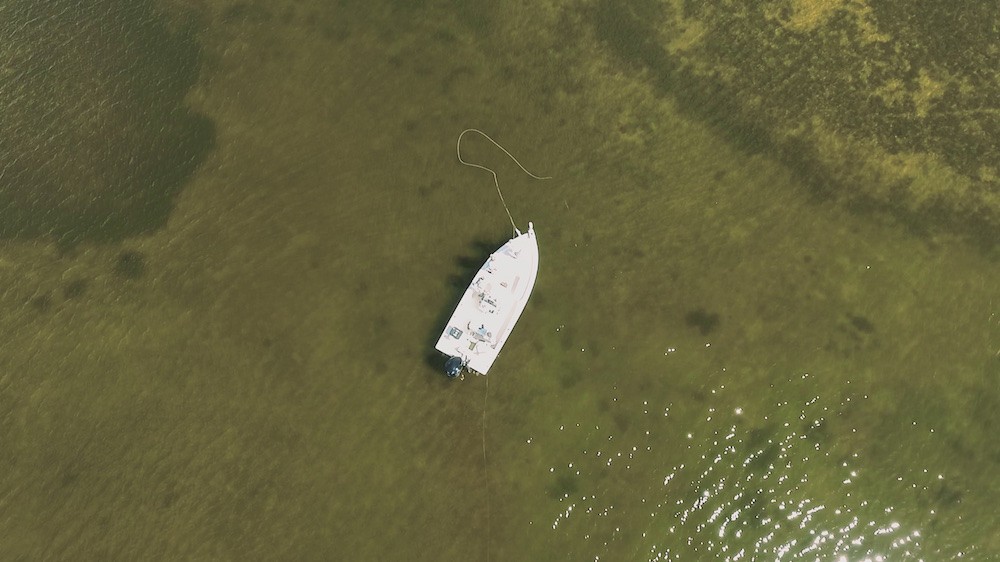Sight fishing; oh man. Nothing gets my hands shaking more than spotting a big fish cruising in skinny water, making a cast and watching that fish chase after your fly. Whether the fish strikes or not, your knees will go weak and you may need to take a second before making another cast. When it does work though, you’ll see an explosion of water and will have a tight quarter, mano e mano fish fight on your hands.

Fish For Shadows, Not Fish
The trickiest part about sight casting, especially when first starting out, is actually seeing the fish. Some guides and expert anglers posses Jedi-like skills of seeing fish, no matter the conditions, but the key to spotting fish is to not look for fish at all. Instead, look for shadows, movement, lines and anything else that stands apart from the bottom. While the fish are perfectly camouflaged to the environment, their shadow beneath them and the lines that make up their body can’t hide as easily.
Your instincts can also play a huge role in spotting fish, more specifically relying on your peripheral vision. Even this past weekend my peripherals gave me the first sighting of a striped bass on the saltwater flats of Cape Cod, MA. With some cloud cover overhead in the early morning, I was having a harder time spotting shadows. I didn’t even believe I saw anything out of the corner of my eye, but something made me turn my head to the left. Trusting my instincts, I threw out my fly and actually hooked up right away. I watched the fish chase after my fly as soon as it hit the water, right before the striper inhaled it…and yes, I was shaking afterwards.

Find The Structure, The Flats Aren’t Flat
Flats fish look for spots to cruise that will give them the best chance at intercepting baitfish or forage without going out of their way. Often times, they may lay in wait just like a trout in a river, letting the current push food right into their mouths. The edges and drop offs of a flat, where the deep channels run alongside the flat or where deeper trenches run through the flat, will let big fish cruise around looking for bait while still keeping their backs wet.
Once you find these highways on the flat, you’ll likely start to see fish. Deliver that fly as close as you can to the edges of the drop offs or any piece of structure that is on the flats, like a buoy or rock that will let fish sit and wait. Experiment with your retrieve to find which combination of pauses, strips and twitches will fool a fish to strike

Flats Fishing Gear Is Essential
A high quality pair of polarized sunglasses is absolutely essential to not only spotting fish on the flats, but also for protecting your eyes. After a long day on the water trying to find fish with a lesser pair of glasses, your eyes will be on fire. The pupils of your eyes will itch and ache and you’ll want to run out and invest in the best pair of glasses you can afford. I say, just go out and get the sunglasses you need from the start.
Sun protective clothing is another must. Not only will it help to protect your body from sun damage, which is nothing to scoff at even if you’re young, but it will also help you blend in and avoid spooking fish. Shirts that are light blue, white or grey will be the best choice for blending in with the sky, acting like camouflage, letting you sneak up closer and closer to schools of fish. Then it’s all up to you to make a good cast and hook up.
When you have the right fly flats fishing gets a whole lot easier. Subscribe to Postfly now and always have the right fly for the saltwater flats.

